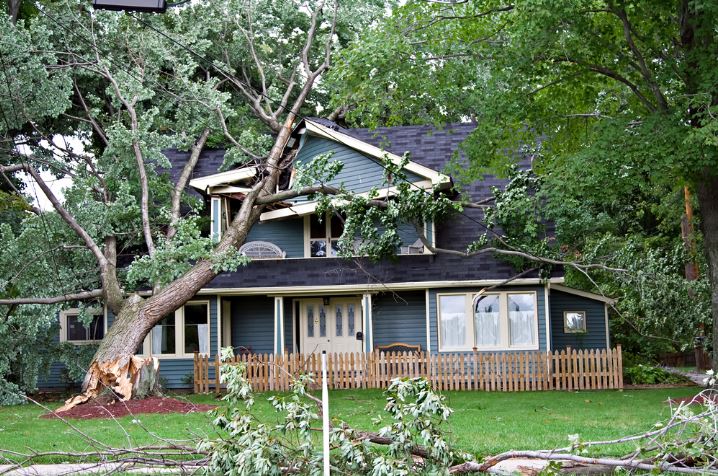Special Limit Example
To better understand how special limits impact insurance policy claims, consider this example.
Maryias grandma was robbed, and the thieves not only took all her jewelry and silverware, but they also made off with $1,500 in cash that her grandma was saving under her mattress.
When her grandma made the insurance claim, she provided all the proof needed that she had $1,500 under the mattress. She gathered her jewelry evaluations, which totaled $16,000. She also provided the silverware details, which added up to $6,000. She provided it to her claims adjuster for her proof of loss form and inventory and felt confident that she would get paid the full $23,500 she suffered in actual loss.
Despite all the meticulous paperwork and proof of the items' value, Maria's grandma only got a total of $4,200 in compensation—$200 for the cash, $2,500 for the silverware, and $1,500 for jewelry.
So why the unexpectedly low payment? The small print on Maria's grandma's home insurance policy included "special limits of liability" that placed caps on the maximum amounts payable. There was no wrongdoing on the part of the grandma or the insurance company, only a costly misunderstanding of what the insurance policy covered.
Insurance Only Covers What's in the Policy
Due to the special limits of insurance on money and the fact that Mary's grandma had not scheduled the jewelry and silverware on a rider or special endorsement, Mary's grandma has now lost thousands from the difference between the value of what was stolen and her payout from the insurance.
The family was upset because they felt shortchanged and scammed by the insurance, but the details were all in the special limits. Mary's grandma didn't do anything wrong, and she had all the information to prove how much she lost, but that doesn't change what kind of insurance policy she had. The insurance company would have never paid those amounts because the policy did not cover it. The insurance company will only pay what they have agreed to pay within the contract.
Why Are There Limits on Certain Items?
Providing special limits on insurance policies ensure that the cost of insurance remains affordable for the general public. Special limits usually limit items to a value that the "average" person would own. That way, the prices of policies are set at a level that the average person can afford.
However, it isn't a perfect system. Special limits on certain items in your policy may have been originally structured at a time when lifestyles and values were different. Some of the limits may have been updated, but they might not take into account today's lifestyles, especially in the areas of technology for freelancers or self-employed workers.
For example, an outdated policy limit might limit the maximum cash payable to $200 or $500. While the situation may have been different back when the policy was written, a person in 2020 doesn't need to be rich to have a few hundred dollars. Consider also how renters insurance or a homeowner policy covers an entire household. A $200 cash limit might not be enough for one person, much less a rented home with four roommates. The policy was likely written with the presumption that people use banks to store "large amounts of money," but how much is a large amount of money?
How to Find the Special Limits in an Insurance Policy
Using the example of a standard homeowner policy (HO-3) you can find the limits under the heading "Coverage C: Personal Property." The Insurance Information Institute has a sample policy you can use to get a sense of what to look for. Your home, condo, or renters insurance policy will follow a similar format and will contain your special limits in the same section.
Every insurance company is different. Some companies offer upscale policies that allow for higher special limits, such as high-value home insurance.
10 Common Special Limits You Should Be Aware Of
Knowing the common items that insurance policies impose special limits on can help you avoid disappointing claims. Here's a list that'll give you the general idea of what you own that may have a special limit. However, the limits vary from company to company, and your policy will likely have limits for more than these 10 items. Inquire with your company for specifics.
Cash
This includes bills, banknotes, coins, and some precious metals, as well as stored-value cards and smart cards.
Securities and Accounts
This includes deeds, evidence of debt, letters of credit, notes, manuscripts, personal records, passports, tickets, and stamps.
Watercraft
This doesn't just include boats, it also includes any furnishings, equipment, and outboard engines or motors.
Trailers and Semitrailers
This may be its own limit, but it depends on how the trailer is used. A trailer for a watercraft, for instance, would fall under watercraft limits.
Jewelry, Watches, and Precious Stones
There is a limit on the maximum amount payable for jewelry, watches, furs, precious, and semi-precious stones lost by theft. This is probably the most common limitation since items like wedding rings are both common and valuable.
Some insurance companies offer insurance specifically for high-value wedding rings. For example, although it is feasible that someone has a $50,000 policy and a $25,000 ring, it doesn't always make sense to the insurance company underwriters to insure a ring that makes up half of a person's total value of possessions. Instead, the ring's owner may buy separate insurance or a rider with high-value insurance companies or jewelry-specialized insurers.
Silver, Gold, Platinum-ware, and Plated-ware
Although it isn't as common to buy fancy dinner sets in 2020 as it was in 1920, many people may have items they inherited. Consideration should be given to these items when you think about what you need to insure.
Firearms
This includes firearms and any related equipment.
On-Premises vs. Off-Premises
For property primarily used for business, this coverage usually has two limits, one of which is "on-premises" and the other is "off-premises." The limit varies greatly but could be as low as $500 for off-premises coverage.
If this applies to you, you will want to inquire about the special limit. You may also be concerned with any exclusion in the policy that does not cover you for a home-based business.
Make sure to discuss this with your insurance company if you have any home-based income. It's important because it not only is limited in the property, but also in your personal liability coverage.
Lifestyle Items
Beware of low limits on lifestyle items such as bicycles, sports equipment, phones, tablets, computers, gaming consoles, and any other electronic devices.
Fine Art, Collectibles, and Collections
These items may not appear in the "Special Limits of Insurance" section, but check in other parts of the policy for wording that limits fine art coverage. If you have antiques, fine art, or collections of any kind, speak to your insurance company about what the basis of claims settlement will be and find out if coverage is limited or excluded. There are special policies built with these items in mind, so it is important to ask your insurance company if you have any of these options.
The Bottom Line
Taking the time to review your special limits can save you thousands of dollars in the cost you pay on your insurance annually, as well as how much you get paid for a claim.
For example, if you don't have many items covered by special limits, you could feel more comfortable accepting a more basic (and cheaper) policy. On the other hand, if special limits are a concern, you can find a policy with higher limits. That way, you can avoid spending additional money on scheduling items on floaters. Be sure to compare your options to get the best solution.
To return to the example of Maria's grandma, she would have been fully compensated in her claim if she had taken the time to add riders or endorsements. Alternatively, she could have been covered by a high-value policy.



